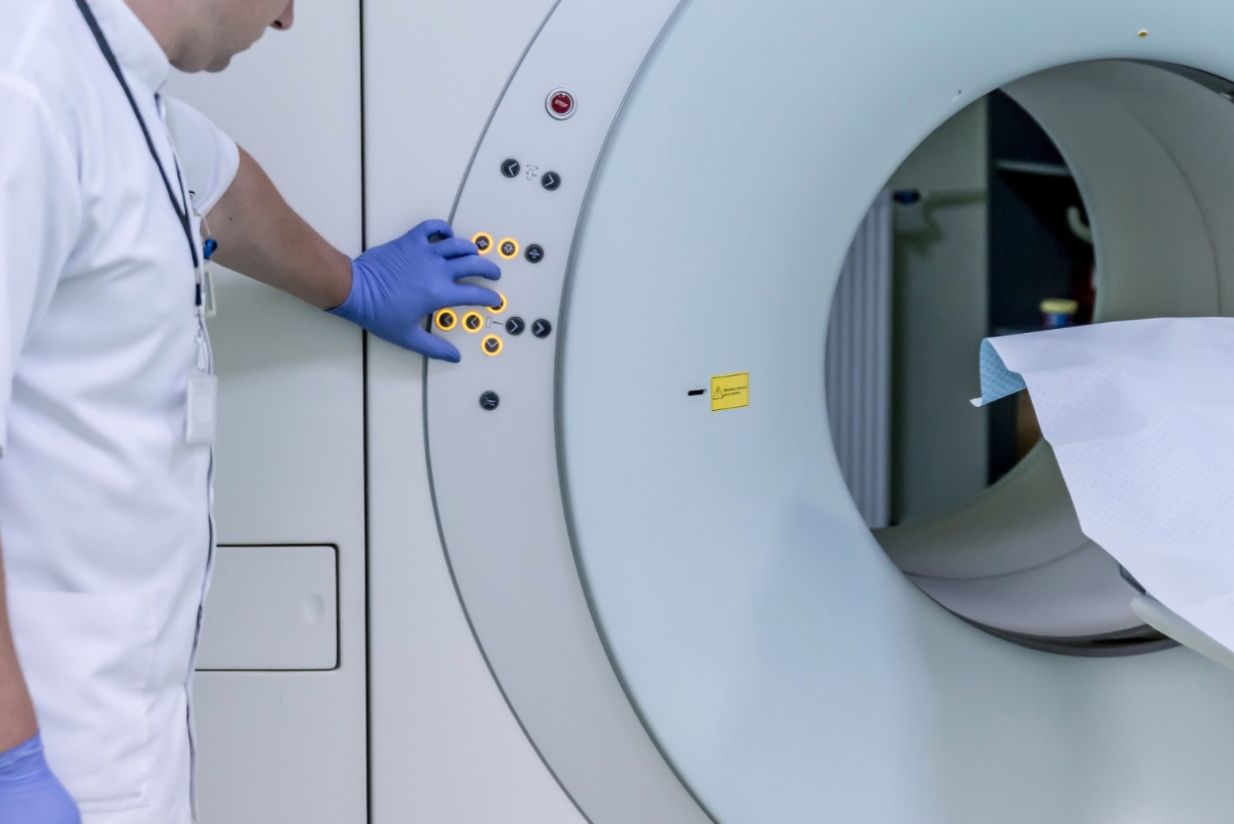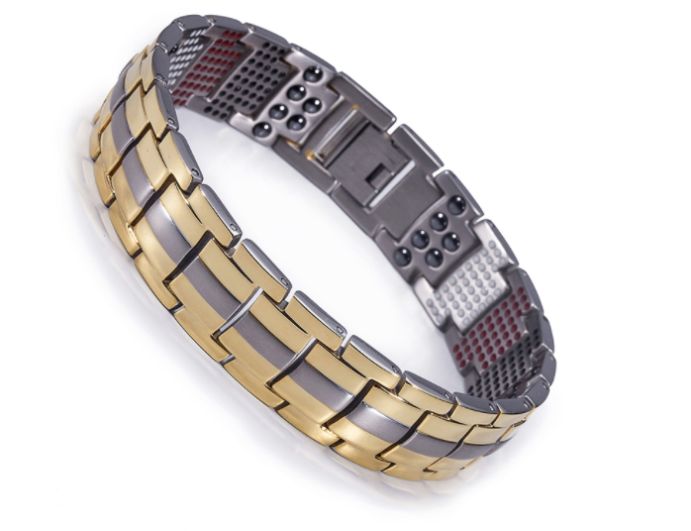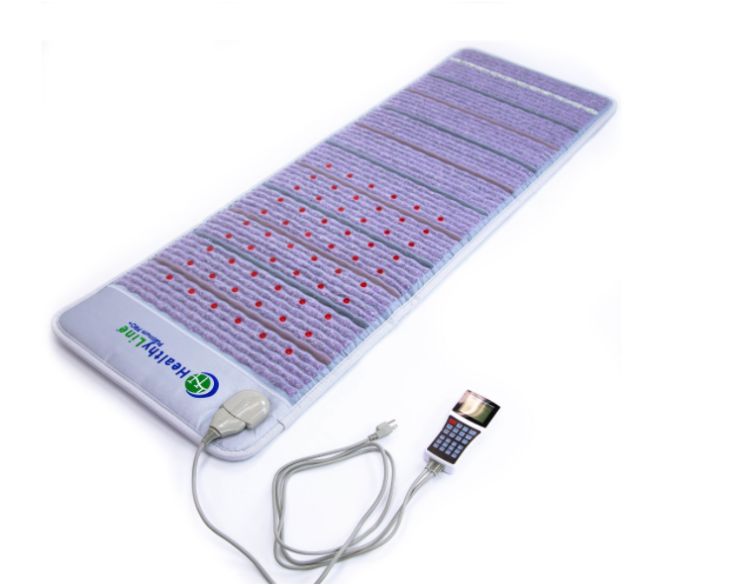
 Magnets are a material used in a wide range of everyday items and are used for a variety of purposes. Whether it’s something as simple as a refrigerator magnet or as advanced as an MRI machine, magnets are all around us! The energy that is created by magnets definitely has a lot of uses.
Magnets are a material used in a wide range of everyday items and are used for a variety of purposes. Whether it’s something as simple as a refrigerator magnet or as advanced as an MRI machine, magnets are all around us! The energy that is created by magnets definitely has a lot of uses.
But did you know that magnets can be used for therapy? Believe it or not, magnetic therapy has actually been around for a few thousand years, although it has changed in a few ways.
The ancient Chinese and Greeks were some of the first practitioners of magnetic therapy, placing magnetic stones on the body to heal it and promote wellness. Nowadays, magnetic therapy has evolved into electromagnetic therapy—though there are still a lot of ways to use traditional magnets for healing.
What is Magnetic Therapy and How Does It Work
So, what is magnetic therapy? How does magnetic therapy work? These are some of the questions that most people ask when researching this topic, and they’re among some of the questions I’ll answer in this blog post.
So, let’s get into what magnets and magnetic therapy are in general!
What is Magnetism
Magnets may seem like some mystical force that can influence other objects. While it does have the ability to do so, it really isn’t some kind of magical phenomenon. In fact, scientists today understand magnetism so well that it is applied in medicine, technology, and a myriad of other products and devices. So how does it work?
Magnetic energy fields are produced by magnets and essentially exert influence on moving electrical currents. Magnets are also able to influence certain objects called ferromagnets, most of which are metals like iron, nickel, and cobalt. The past hundred-or-so years also saw the development of electromagnets.
This differs from other magnets (called static magnets) as they do not naturally produce a magnetic field, but instead create one when an electrical current is applied. Electromagnets can produce a much more powerful magnetic energy field and are used often in medical equipment and technology. But how are magnets used in therapy?
Magnetic Therapy
As we’ve discussed, magnets are used in a wide range of tech products and other advanced devices, but how are they used in therapeutic devices? Understanding how these products work also gives us an understanding of how magnetic field therapy affects the body. There are really two kinds of magnetic field therapy.
The first and simpler form is called static magnetic therapy and involves the application of magnets on the body. These kinds of magnets do not produce as strong of a magnetic field and there is a lot of debate about whether this form of magnetic therapy is actually effective. Regardless, those who use static magnets for therapy swear by its results and can be worn as jewelry or bracelets as well as stones that can be placed on your body.
The other form of magnetic field therapy is electromagnetic field therapy. As stated before, electromagnets use electricity to generate a magnetic field. One of the most popular forms of this is called PEMF therapy and uses lower frequency magnetic waves to heal cells within your body. At HealthyLine, we offer a range of static magnetic products (mainly bracelets and bedding).
We are also well known for our PEMF therapy mats. But we can get more into HealthyLine’s magnetic products later on. First, let’s learn how magnets can work on your body!
How Does Magnetic Therapy Work?
Magnetic therapy affects your body at a cellular and microscopic level. For example, static magnets are believed to improve circulation in your body. This improved state of blood flow can give you powerful health and wellness benefits. There have been many studies that demonstrate the use of magnets and health benefits, and others that debunk them.
On the other hand, there have been many reports that demonstrate the use of electromagnetic therapy and PEMF as an effective way to treat pain and improve your overall well-being. However, the science behind this form of magnetic therapy is a bit more complicated. Each of the cells in your body has an electric and magnetic charge that influences the permeability of the cells’ membranes.
Over time, these charges become weakened and so does the health of a cell. When our cells are weaker, they aren’t able to absorb nutrients and expel waste as well as they could in the past. PEMF therapy can return the charges of our cells back to their normal, healthy state. This means that cells can function more efficiently. When your body’s cells are functioning at their best state, so is the rest of your body!
Health Benefits of Magnetic Therapy
 Okay. So, you now understand how magnetic therapy works on the body. But how does this translate into actual, noticeable health and wellness benefits?
Okay. So, you now understand how magnetic therapy works on the body. But how does this translate into actual, noticeable health and wellness benefits?
Well, there are actually quite a few ways that you can feel better from magnets, including:
- Reduced muscle pain and inflammation
- Improvements in arthritis and other joint conditions
- Better mood and less depression
- Healing of bone injuries
Let’s start with the first of these benefits.
Muscle Pain and Inflammation
Magnetic therapy is a great way to treat and reduce pain in your muscles and inflammation in the tissues. In fact, it helps ease the physical discomfort that follows your workout or exercise routine. This has to do with the effect magnets have on your circulation and blood.
One study found that when a static magnetic field was placed on an injured area, that area had a significant reduction in inflammation. PEMF therapy is also very effective at alleviating muscle pain. Whether it’s minor aches or chronic discomfort, PEMF is great at reducing pain. This has to do with the effect PEMF has on cells. Improved circulation is also another factor, as well.
A 2007 study found that those with fibromyalgia that were treated with PEMF had reduced symptoms than those who were treated with a sham device.
Arthritis and Joint Pain
Joint pain and conditions can also be improved through magnetic therapy. Magnetic therapy bracelets are specifically great to reduce pain in the wrist. For example, carpal tunnel is a condition that causes numbness and tingling in the wrist due to long term compression or repetitive movements.
Magnetic bracelets have been considered a helpful tool to reduce these negative symptoms. Just like PEMF can help treat muscle pain, it is also effective at alleviating joint pain in the hips, arms, legs, and more.
A research review into the benefits of PEMF for those with arthritis noted that this form of magnetic therapy was capable of reducing symptoms. The review even found that the research indicated that PEMF had an anti-inflammatory effect on inflammation around the joints.
Mood and Depression
Static magnetic therapy has always been considered a great way to naturally improve your mood and energy levels. It should be noted, however, that no study has been able to prove this with certainty.
Regardless, who doesn’t want to be in a better mood! Where magnetic therapy helps the most with mental health issues is with electromagnetic therapy. rTMS, or repetitive transcranial magnetic stimulation, is often used for people suffering from chronic depression.
It is specifically helpful for those who want a natural treatment method or those whose bodies do not respond to medication. PEMF therapy has also been known to treat depression as well as improve overall mood levels.
Bone Healing
While static magnetic therapy isn’t used to heal or strengthen bones, PEMF therapy has been proven to aid in bone recovery. In fact, the FDA has even approved PEMF for nonunion and delayed bone fractures. This is because PEMF can optimize osteoblast function and generate more osteoblasts. This benefit of PEMF is also another reason why it is an effective tool for treating arthritis!HealthyLine Magnet Therapy Products
Here at HealthyLine, we offer a few different options for magnetic therapy. Below is a quick overview of some of our most popular.Titanium Unisex Magnetic Power 4-in-1 Bracelet
 Our magnet energy bracelets are a great solution to deal with pain in the wrist as well as improve energy and circulation. This specific bracelet also comes with natural gemstones, negative ions, and far-infrared rays. Not only does it improve your wellness, but it is also very stylish, too!
Our magnet energy bracelets are a great solution to deal with pain in the wrist as well as improve energy and circulation. This specific bracelet also comes with natural gemstones, negative ions, and far-infrared rays. Not only does it improve your wellness, but it is also very stylish, too!
Tourmaline Magnet Energy Blanket – Cotton
 Who knew that inserting magnets into your bedding could help you sleep better? This HealthyLine comforter has 100 magnets that help you sleep more soundly throughout the night. They are also able to give you more energy in the morning. And did we mention that it’s incredibly comfortable?
Who knew that inserting magnets into your bedding could help you sleep better? This HealthyLine comforter has 100 magnets that help you sleep more soundly throughout the night. They are also able to give you more energy in the morning. And did we mention that it’s incredibly comfortable?
Platinum Mat Full 7224 Firm
 Our Platinum mats are the top-of-the-line when it comes to PEMF therapy mats. It features a PEMF system that allows you to program the frequency, intensity, waveform, pulse duration, and other features of the magnetic energy. It also comes with far-infrared therapy, negative, ion therapy, and photon lights that take your therapeutic experience to the next level! Closing There are really so many ways that magnetic therapy can bring better health to your life. I hope this blog post has answered the questions of “what is magnetic therapy?”, “How does magnetic therapy work?”, and any other questions you might have! So, introduce the wellness benefits of magnetic therapy into your life with HealthyLine!
Our Platinum mats are the top-of-the-line when it comes to PEMF therapy mats. It features a PEMF system that allows you to program the frequency, intensity, waveform, pulse duration, and other features of the magnetic energy. It also comes with far-infrared therapy, negative, ion therapy, and photon lights that take your therapeutic experience to the next level! Closing There are really so many ways that magnetic therapy can bring better health to your life. I hope this blog post has answered the questions of “what is magnetic therapy?”, “How does magnetic therapy work?”, and any other questions you might have! So, introduce the wellness benefits of magnetic therapy into your life with HealthyLine!

